fuse box TOYOTA HIGHLANDER 2010 XU40 / 2.G Owners Manual
[x] Cancel search | Manufacturer: TOYOTA, Model Year: 2010, Model line: HIGHLANDER, Model: TOYOTA HIGHLANDER 2010 XU40 / 2.GPages: 608, PDF Size: 11.99 MB
Page 437 of 608
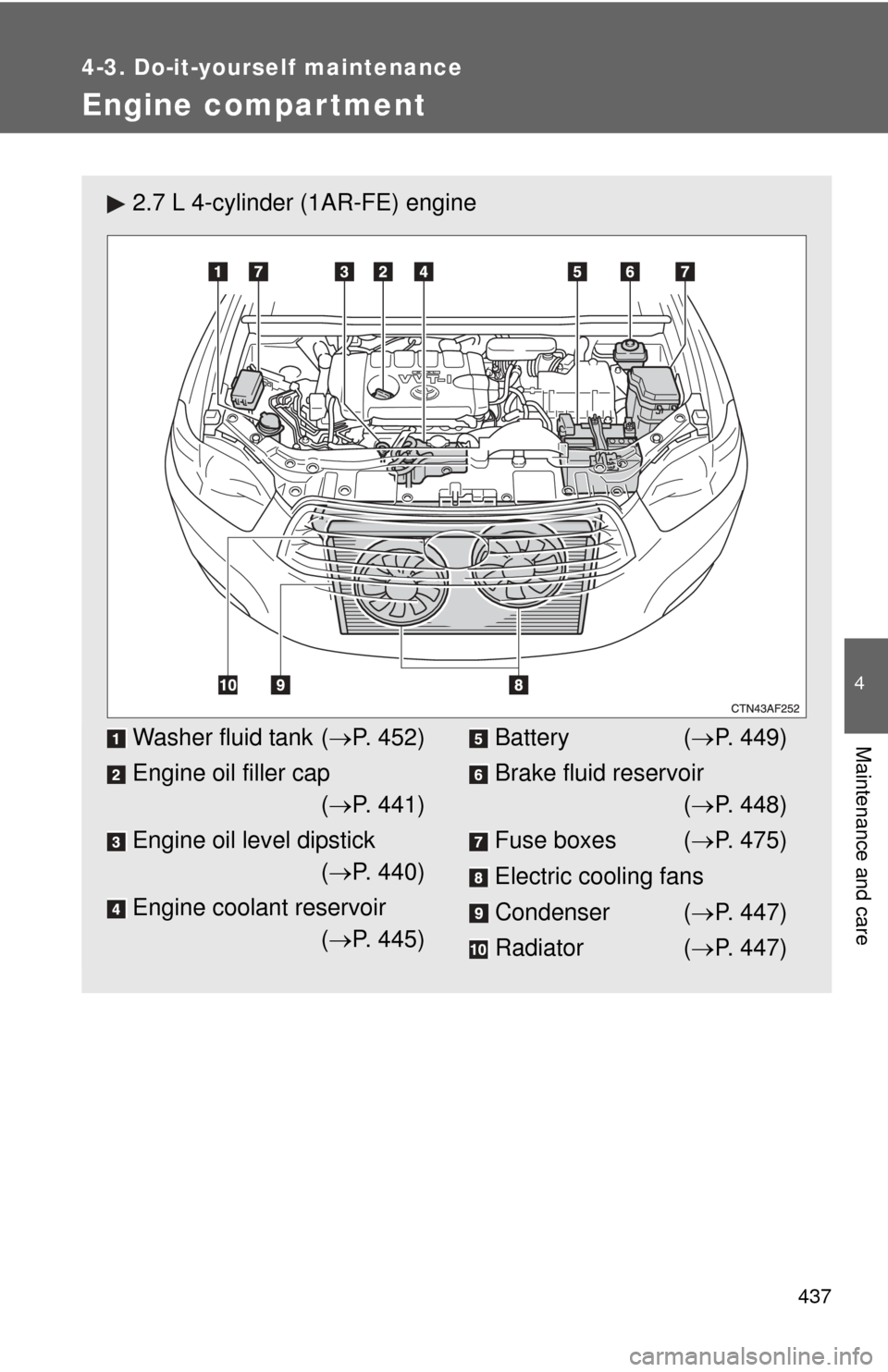
437
4-3. Do-it-yourself maintenance
4
Maintenance and care
Engine compar tment
2.7 L 4-cylinder (1AR-FE) engine
Washer fluid tank (P. 452)
Engine oil filler cap ( P. 441)
Engine oil level dipstick ( P. 440)
Engine coolant reservoir ( P. 445)Battery ( P. 449)
Brake fluid reservoir ( P. 448)
Fuse boxes ( P. 475)
Electric cooling fans
Condenser ( P. 447)
Radiator ( P. 447)
Page 438 of 608
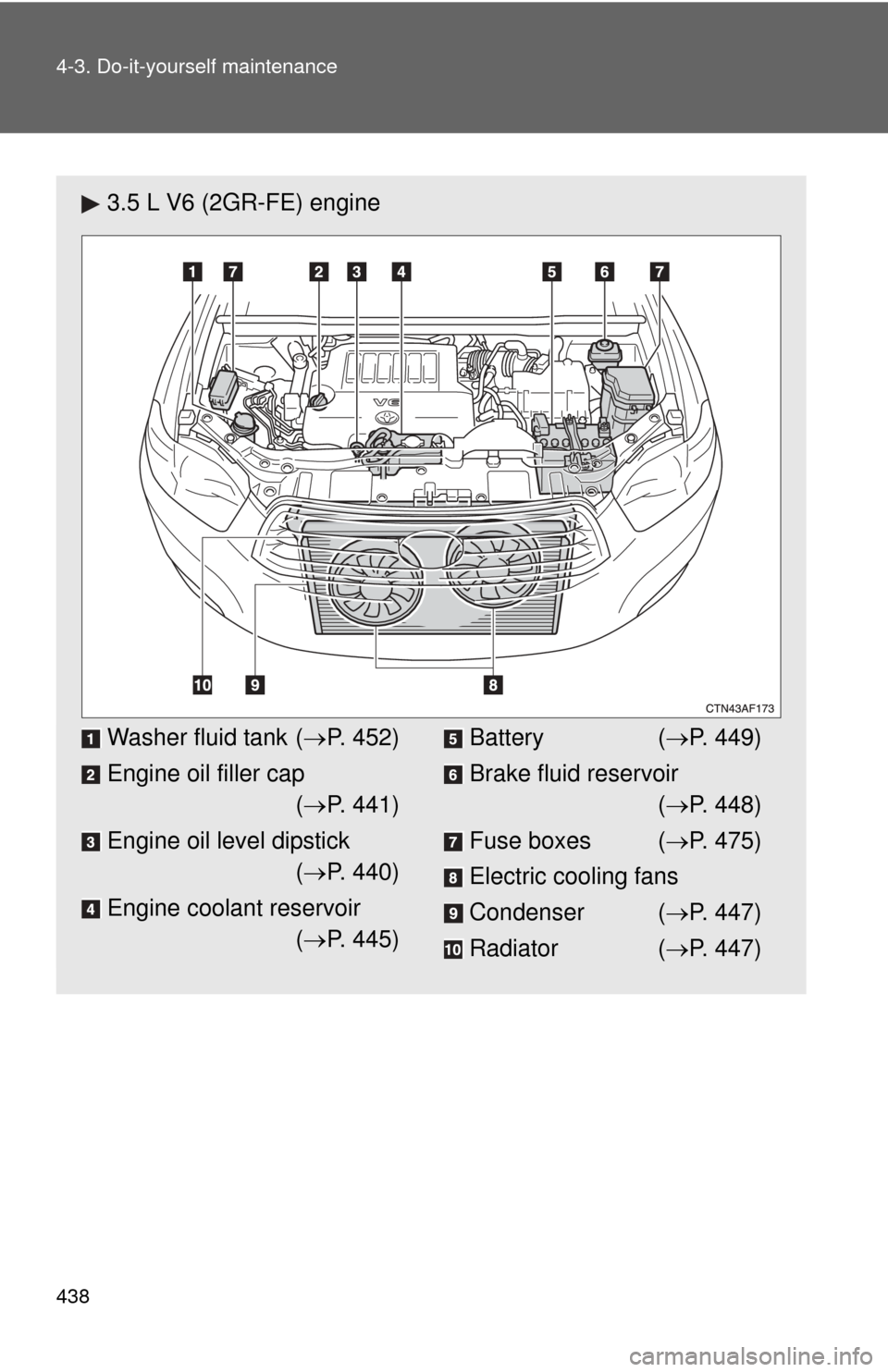
438 4-3. Do-it-yourself maintenance
3.5 L V6 (2GR-FE) engine
Washer fluid tank (P. 452)
Engine oil filler cap ( P. 441)
Engine oil level dipstick ( P. 440)
Engine coolant reservoir ( P. 445)Battery ( P. 449)
Brake fluid reservoir ( P. 448)
Fuse boxes ( P. 475)
Electric cooling fans
Condenser ( P. 447)
Radiator ( P. 447)
Page 475 of 608
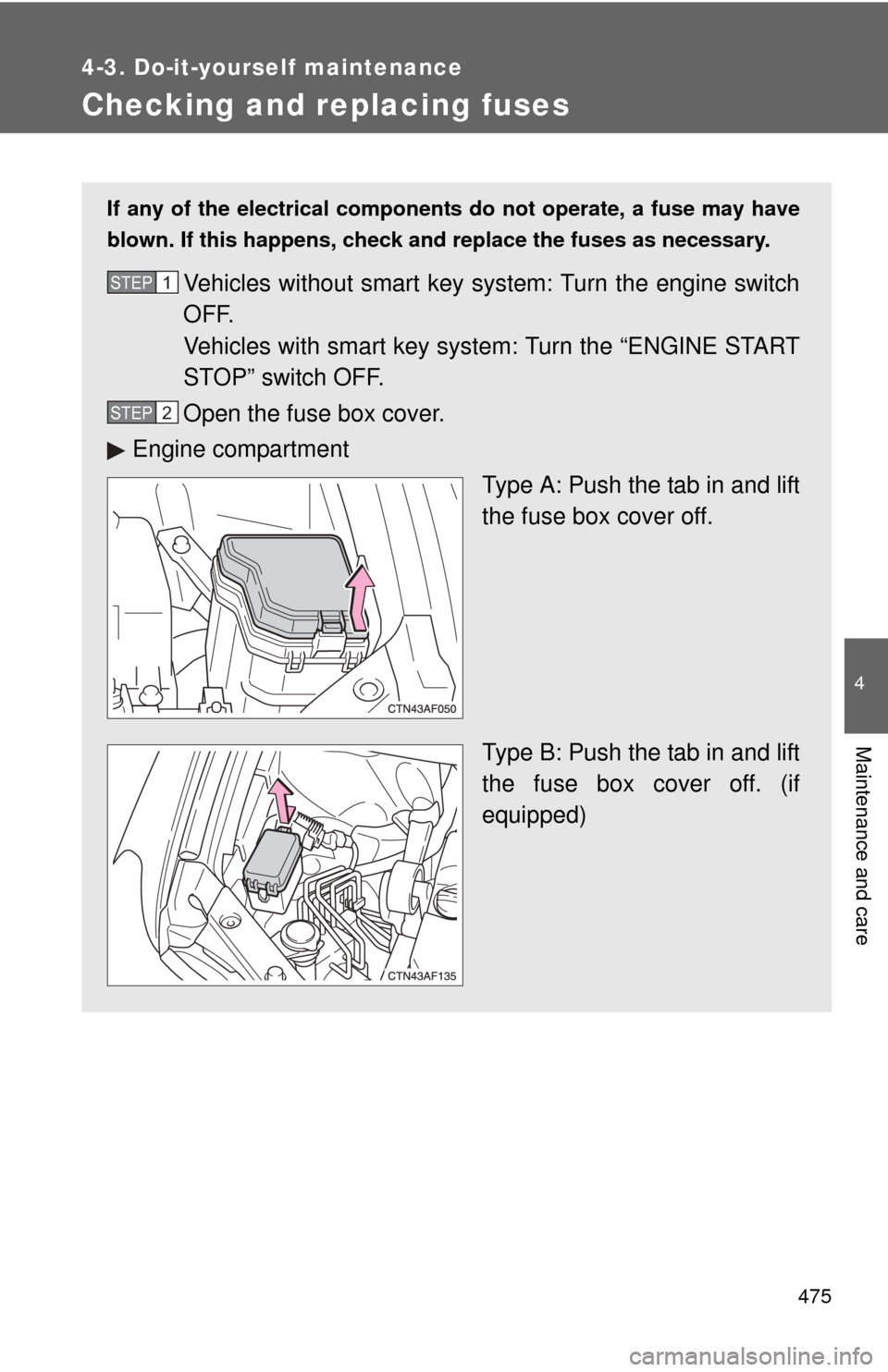
475
4-3. Do-it-yourself maintenance
4
Maintenance and care
Checking and replacing fuses
If any of the electrical components do not operate, a fuse may have
blown. If this happens, check and replace the fuses as necessary.
Vehicles without smart key system: Turn the engine switch
OFF.
Vehicles with smart key system: Turn the “ENGINE START
STOP” switch OFF.
Open the fuse box cover.
Engine compartment Type A: Push the tab in and lift
the fuse box cover off.
Type B: Push the tab in and lift
the fuse box cover off. (if
equipped)STEP1
STEP2
Page 476 of 608
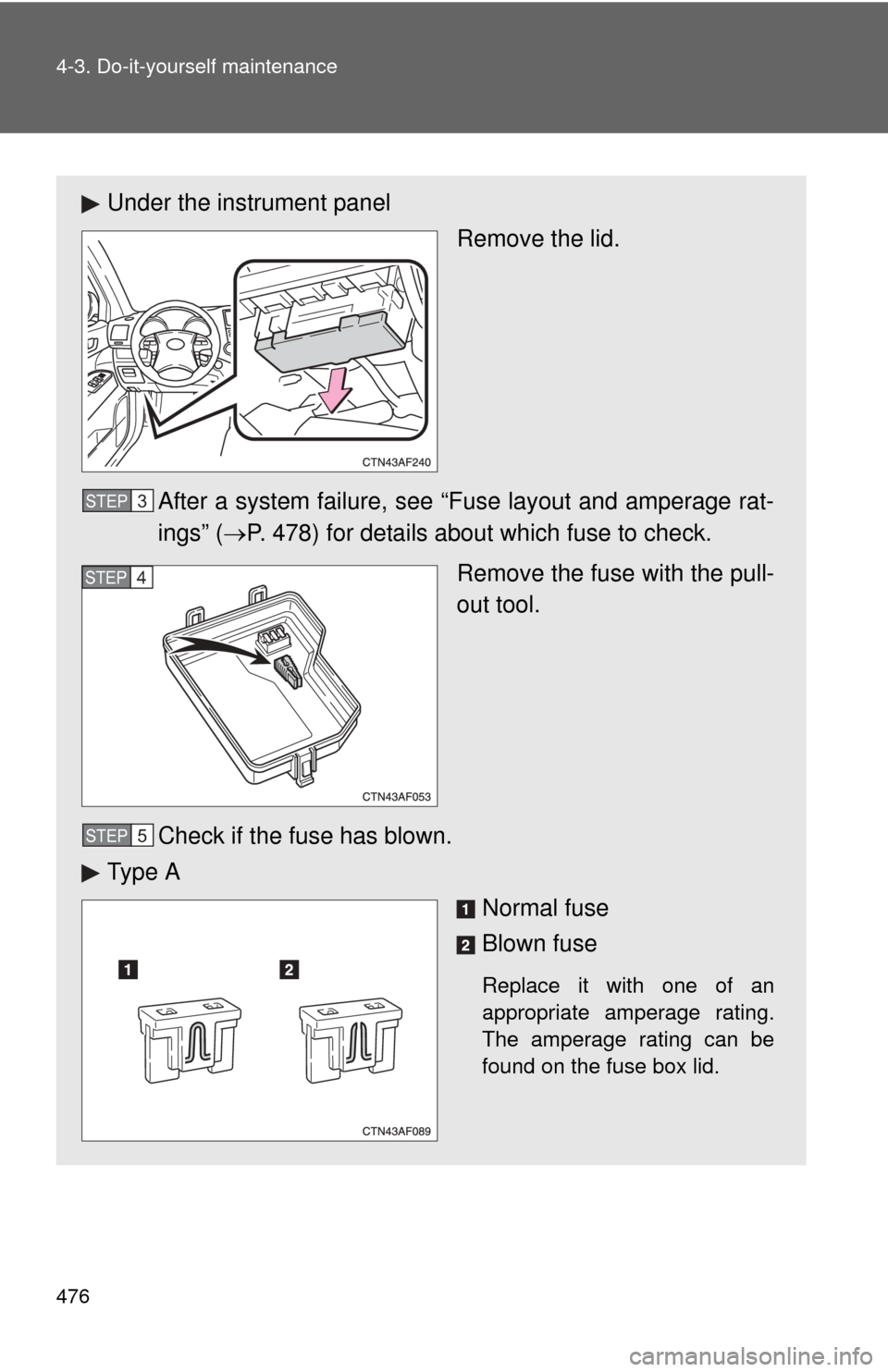
476 4-3. Do-it-yourself maintenance
Under the instrument panelRemove the lid.
After a system failure, see “Fuse layout and amperage rat-
ings” ( P. 478) for details about which fuse to check.
Remove the fuse with the pull-
out tool.
Check if the fuse has blown.
Ty p e A Normal fuse
Blown fuse
Replace it with one of an
appropriate amperage rating.
The amperage rating can be
found on the fuse box lid.
STEP3
STEP4
STEP5
Page 477 of 608
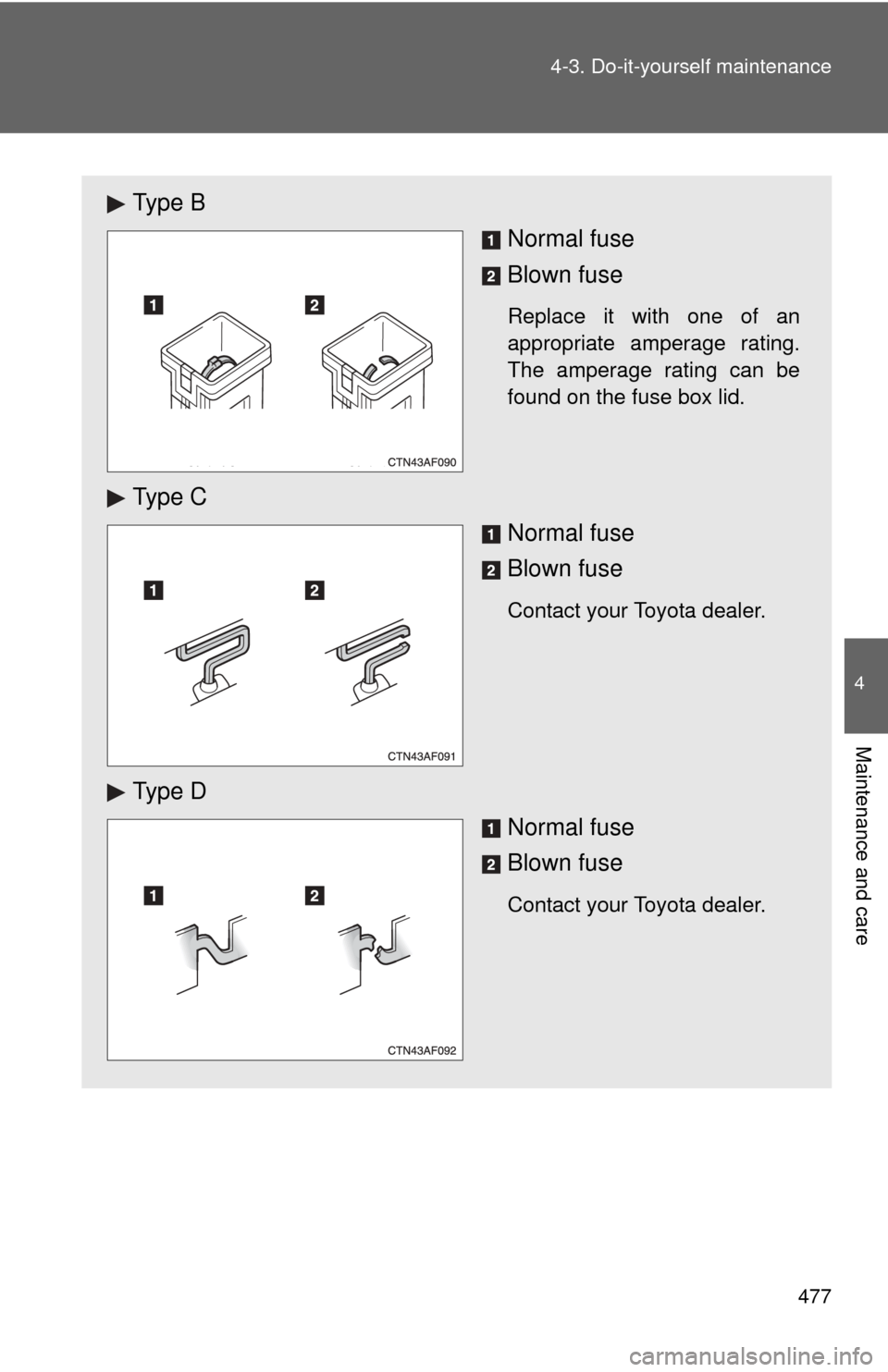
477
4-3. Do-it-yourself maintenance
4
Maintenance and care
Ty p e B
Normal fuse
Blown fuse
Replace it with one of an
appropriate amperage rating.
The amperage rating can be
found on the fuse box lid.
Ty p e C
Normal fuse
Blown fuse
Contact your Toyota dealer.
Ty p e DNormal fuse
Blown fuse
Contact your Toyota dealer.
Page 483 of 608
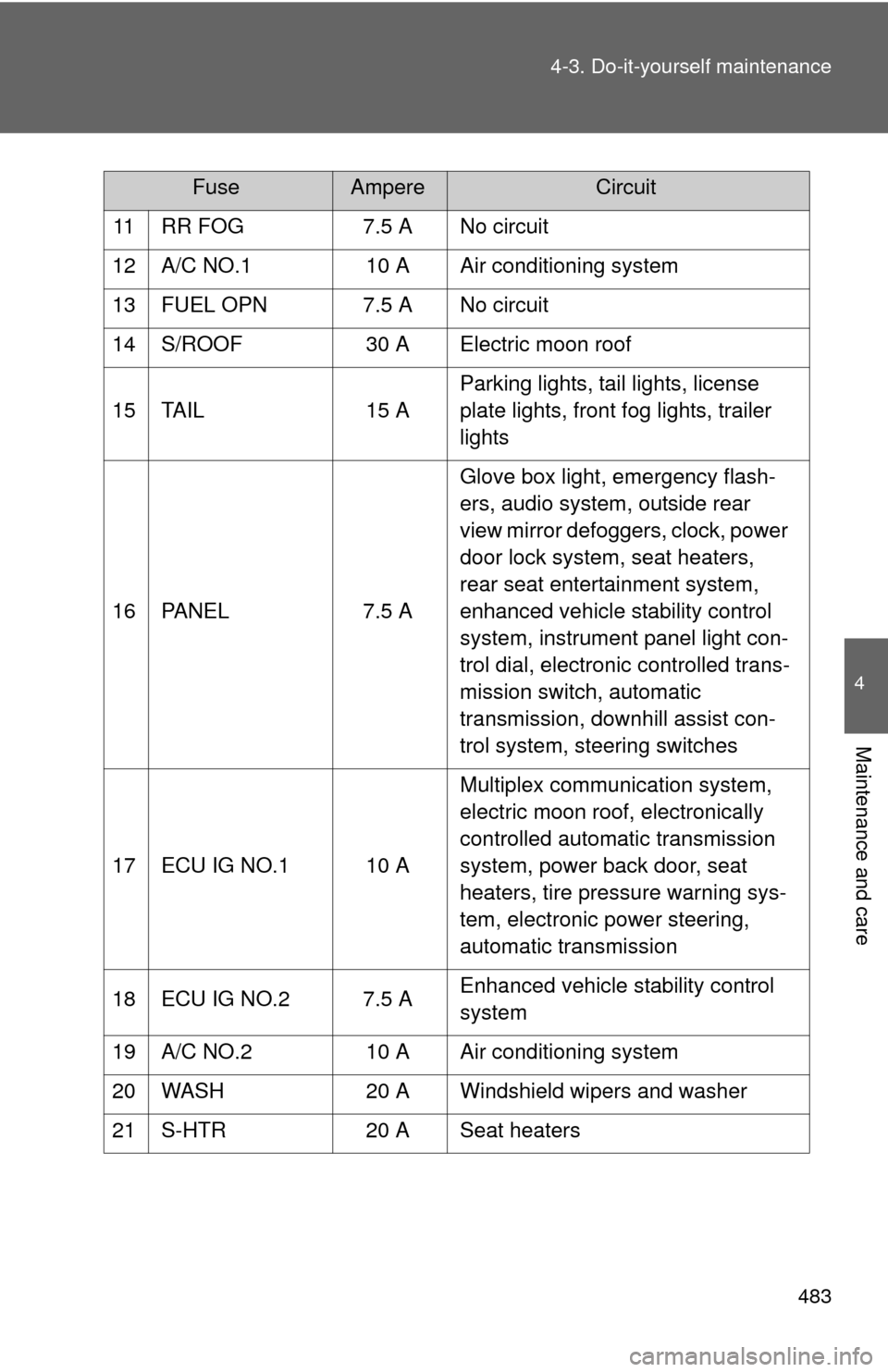
483
4-3. Do-it-yourself maintenance
4
Maintenance and care
11 RR FOG
7.5 A No circuit
12 A/C NO.1 10 A Air conditioning system
13 FUEL OPN 7.5 A No circuit
14 S/ROOF 30 A Electric moon roof
15 TAIL 15 AParking lights, tail lights, license
plate lights, front fog lights, trailer
lights
16 PANEL 7.5 AGlove box light, emergency flash-
ers, audio system, outside rear
view mirror defoggers, clock, power
door lock system, seat heaters,
rear seat entertainment system,
enhanced vehicle stability control
system, instrument panel light con-
trol dial, electronic controlled trans-
mission switch, automatic
transmission, downhill assist con-
trol system, steering switches
17 ECU IG NO.1 10 A Multiplex communication system,
electric moon roof, electronically
controlled automatic transmission
system, power back door, seat
heaters, tire pressure warning sys-
tem, electronic power steering,
automatic transmission
18 ECU IG NO.2 7.5 A Enhanced vehicle stability control
system
19 A/C NO.2 10 A Air conditioning system
20 WASH 20 A Windshield wipers and washer
21 S-HTR 20 A Seat heaters
FuseAmpereCircuit
Page 485 of 608
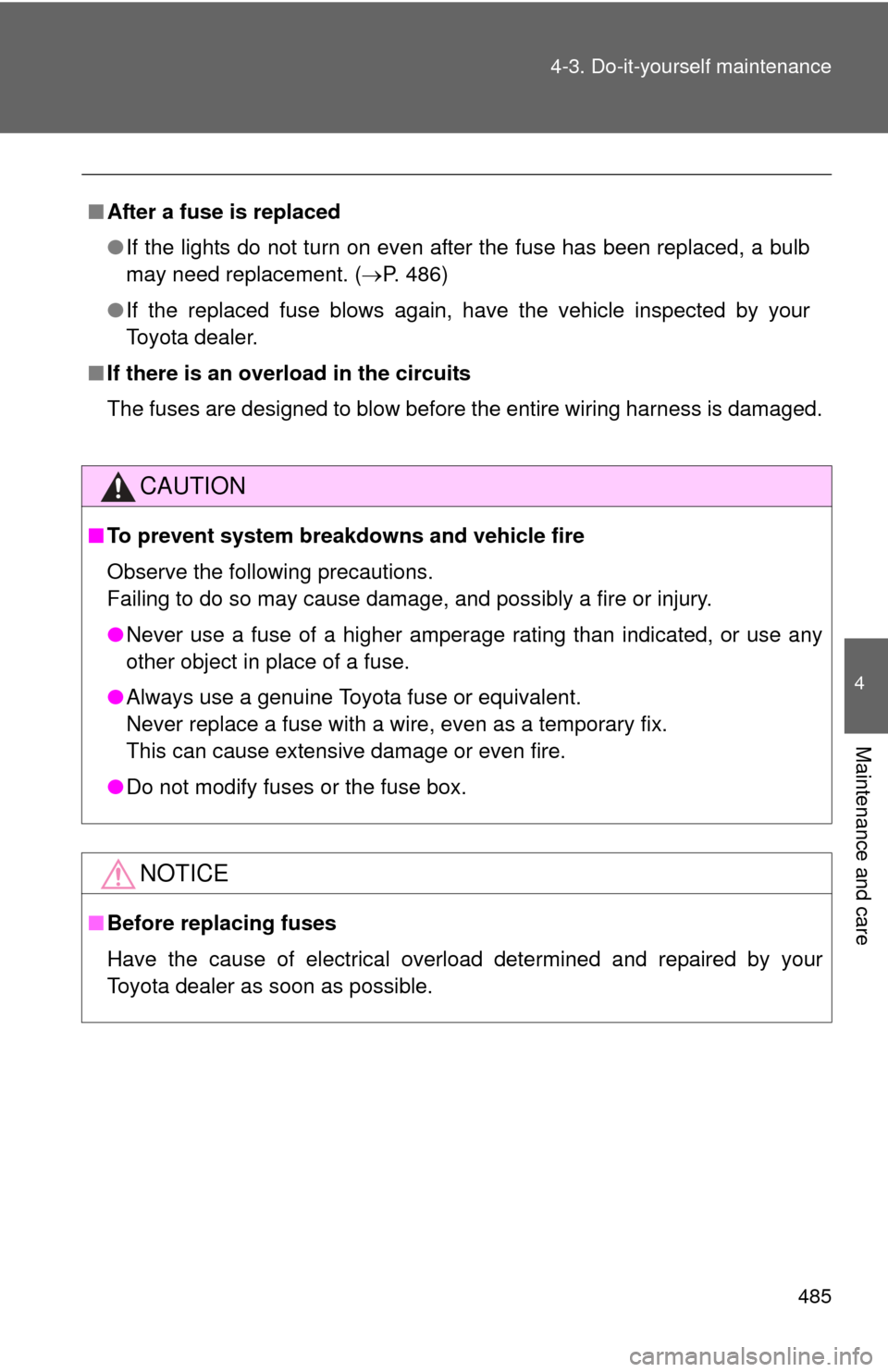
485
4-3. Do-it-yourself maintenance
4
Maintenance and care
■
After a fuse is replaced
●If the lights do not turn on even after the fuse has been replaced, a bulb
may need replacement. ( P. 486)
● If the replaced fuse blows again, have the vehicle inspected by your
Toyota dealer.
■ If there is an overload in the circuits
The fuses are designed to blow before the entire wiring harness is damaged.
CAUTION
■To prevent system breakdowns and vehicle fire
Observe the following precautions.
Failing to do so may cause damage, and possibly a fire or injury.
●Never use a fuse of a higher amperage rating than indicated, or use any
other object in place of a fuse.
● Always use a genuine Toyota fuse or equivalent.
Never replace a fuse with a wire, even as a temporary fix.
This can cause extensive damage or even fire.
● Do not modify fuses or the fuse box.
NOTICE
■Before replacing fuses
Have the cause of electrical overload determined and repaired by your
Toyota dealer as soon as possible.